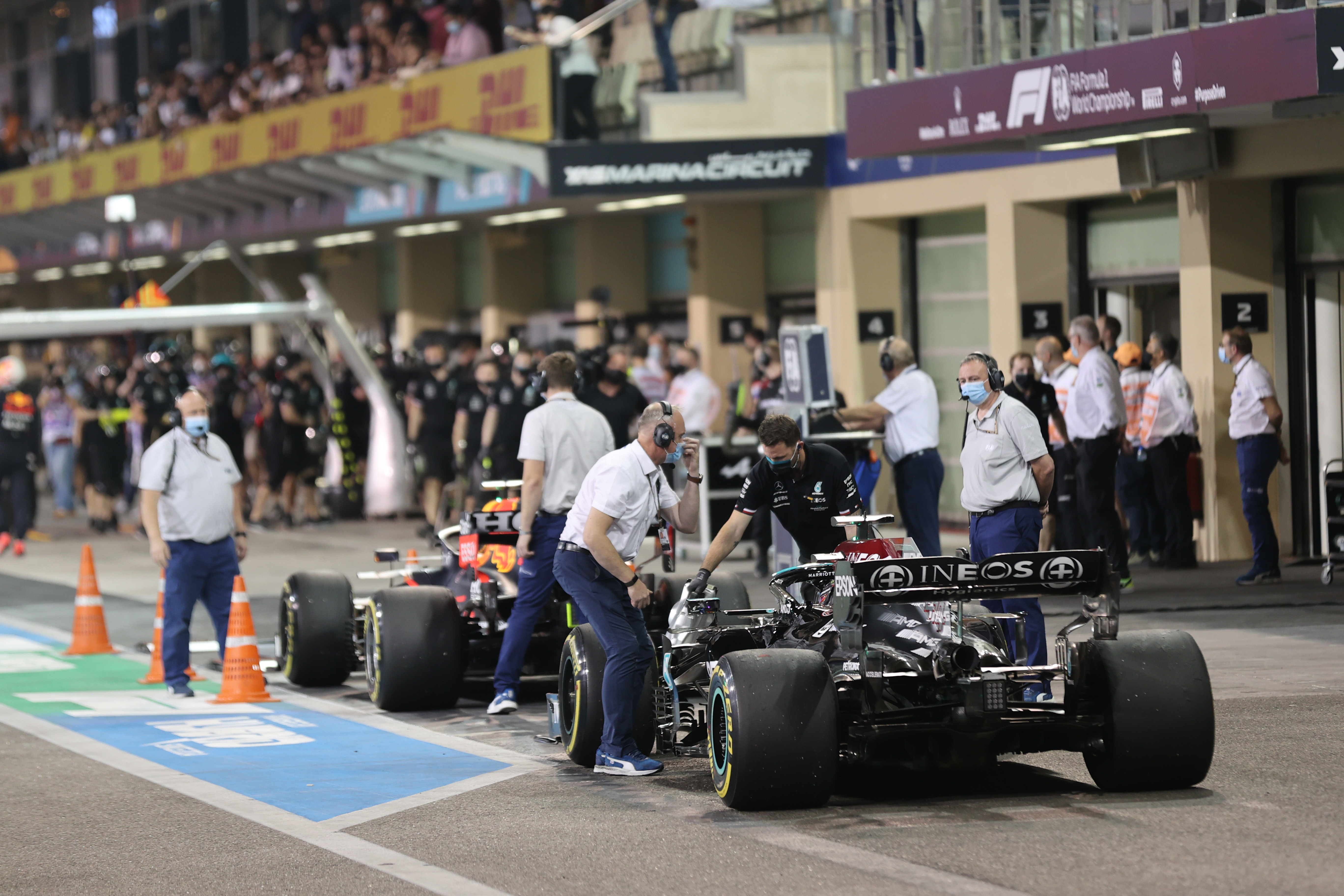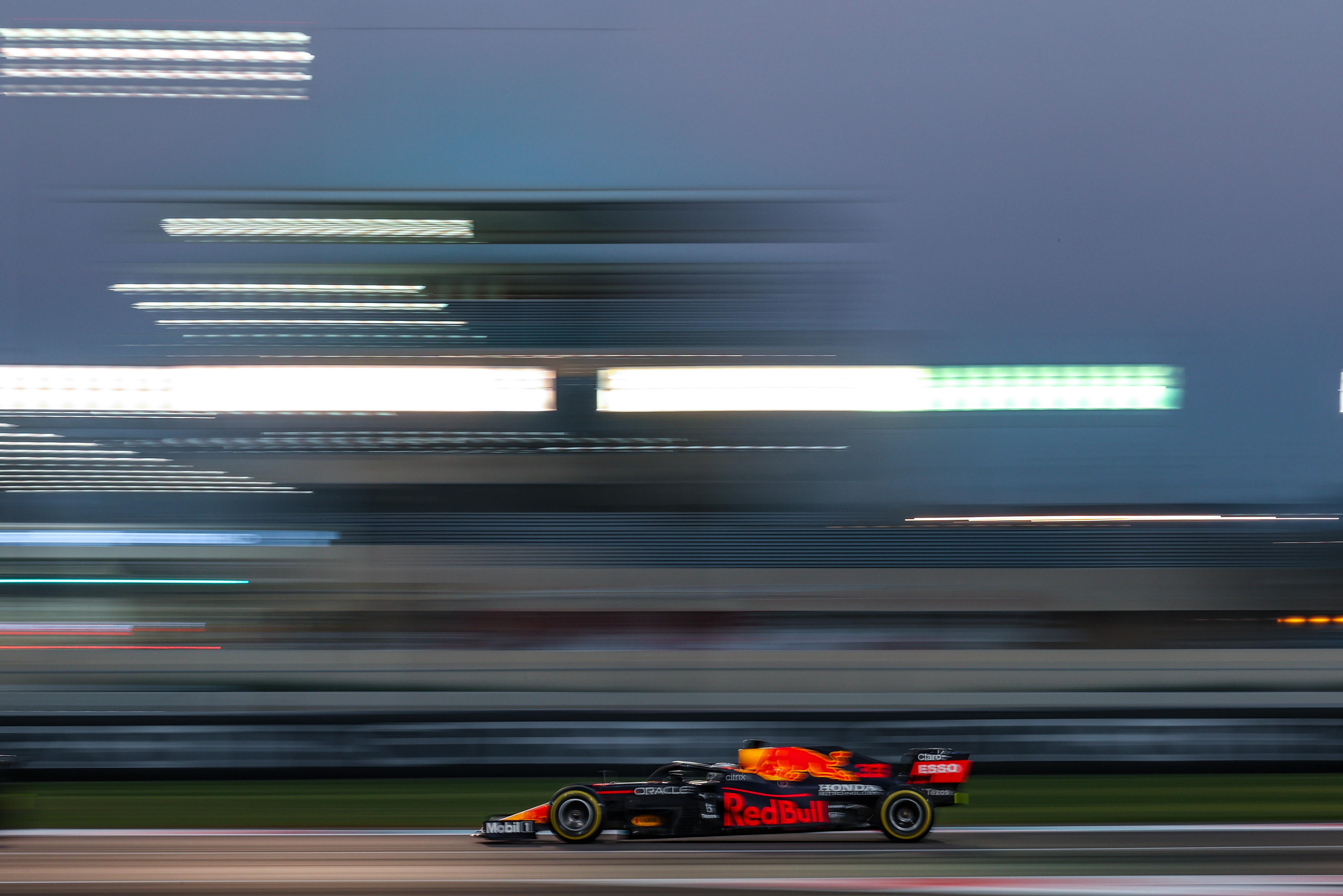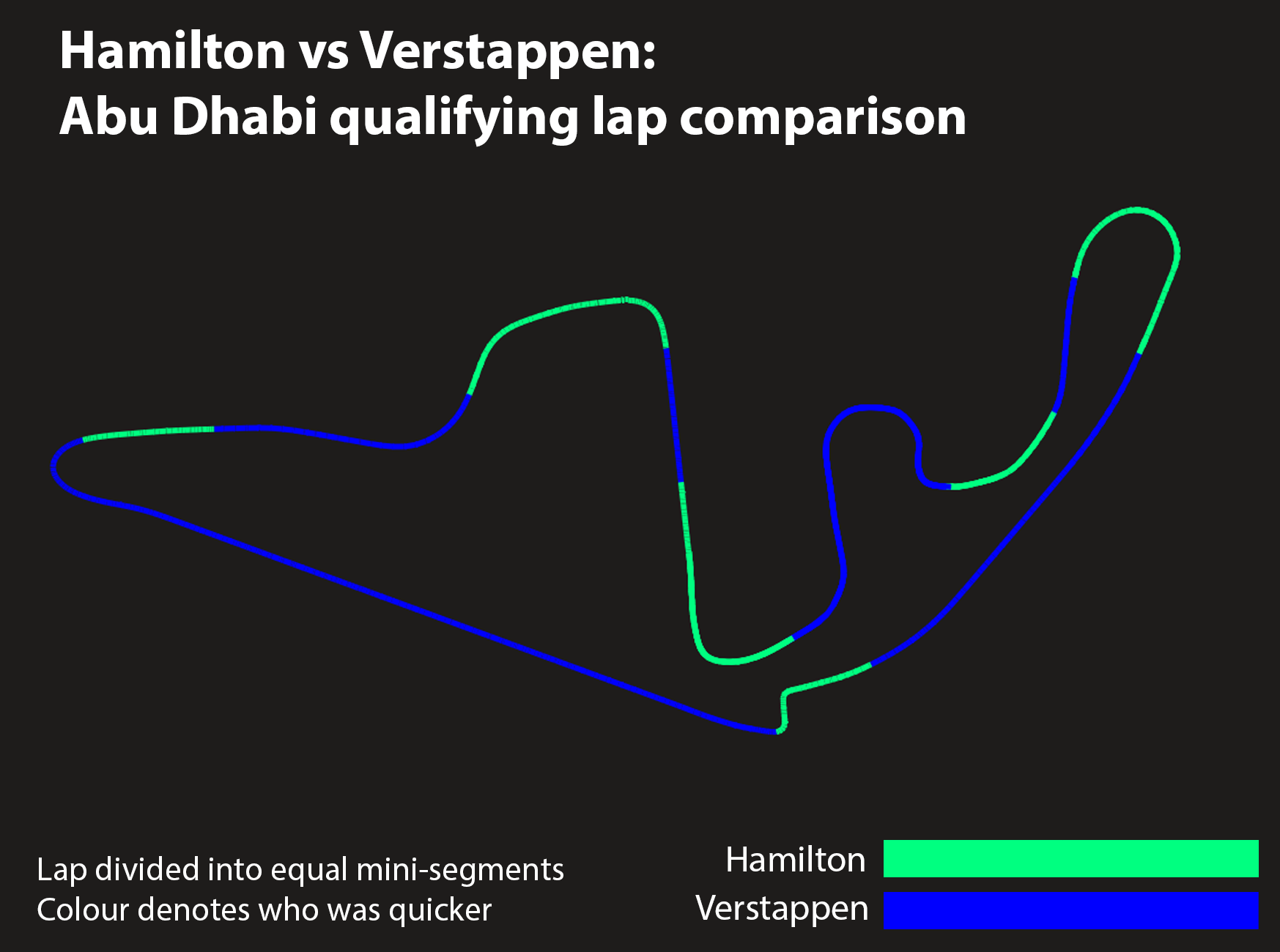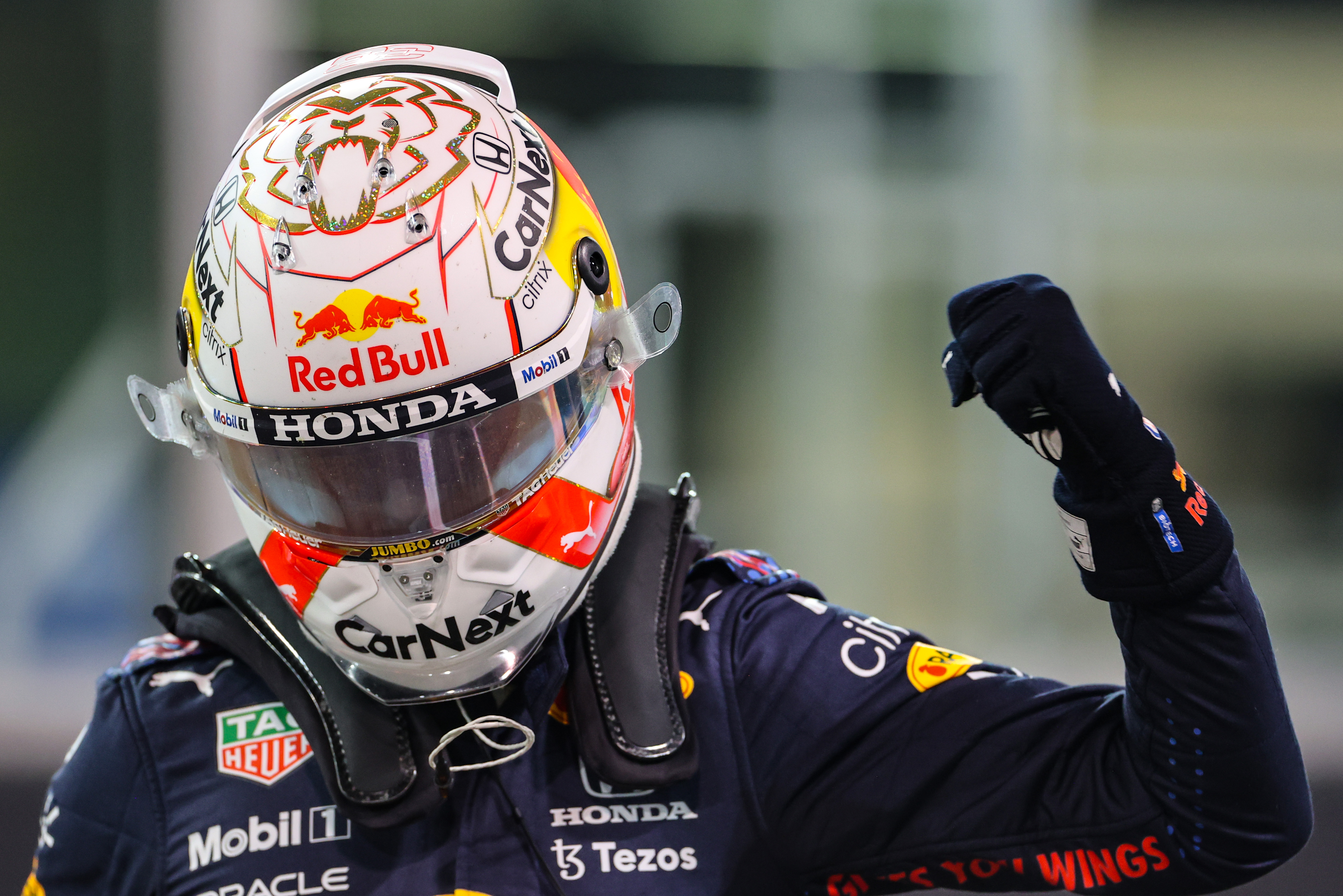Mark Hughes: Where Verstappen found his stunning pole pace
Red Bull went into Abu Dhabi Grand Prix qualifying seemingly off Mercedes’ pace, yet it and Max Verstappen turned things around and beat Lewis Hamilton to pole. This is how

At the Abu Dhabi Grand Prix, Max Verstappen pulled something special out of the bag to do what he had been about to do in Jeddah qualifying last week before the final corner crash: delivering a spectacular pole position over 0.3s clear of Formula 1 title rival Lewis Hamilton.
Verstappen has an extraordinary well of talent to draw from but for any driver to fully access all that they have requires the car to be co-operating and Red Bull – after a tricky preparation to the weekend on this circuit which grips up so significantly after the sun sets – gave him just such a car.
Just as in practice yesterday, finding the sweet spot of balance – something that would work over a single lap and also during the race – on a cooling, ever-more grippy track, was a complex matter. Generally, as track grip increases, so does understeer.
The Red Bull can easily be caught out by such situations, as it sits on the cusp of running out of front wing adjustment, so much downforce does its high-rake rear end deliver. Hungary and Turkey were just such situations.
The genius of Max Verstappen is not going to find you much extra lap time if the car has an understeer balance. He’ll drive it to its limit, but it will be a tame, inert limit that won’t allow him to fully express his advantage over a merely good F1 driver. The Mercedes tends to have a less critical window and can be balanced through a greater variety of track grip conditions.

Those hard points were reflected in the respective level of activity in the Red Bull and Mercedes garages during the practices.
There were a lot more changes going on at Red Bull. And the timing screens suggested – if you weren’t looking beneath the surface to see the patterns and how they were shifting with the evolving track – that this was comfortably going to be a Mercedes weekend.
Even Red Bull felt it might be, for even if it found its own sweet spot, it had no way of knowing that Mercedes wouldn’t made its own gains to stay ahead.
Red Bull felt it was the underdog. Even coming into the weekend it was nervous about the way the track grip increases here into the night and the effect it might have on the balance.
That’s why it had put Verstappen and Sergio Perez on different rear wings on Friday, Verstappen on the higher downforce version of the spoon wing, Perez on the lower.
For Saturday, the team inverted that, with Max going for the skinnier version. Quite aside from the greater straightline speed which was going to be important if racing Hamilton especially if – as Red Bull expected – it qualified behind, the skinnier wing also made it less vulnerable to getting into than horrible no man’s land of set-up where the car understeers but there’s no more front wing adjustment available.
The higher downforce wing was actually quicker over the lap – so long as the car could be kept in its balance window. It was decided this offered the best chance of getting Perez up at the sharp end, able to influence the race with the Mercedes.

So Verstappen surrendered some ultimate possible lap time for a more raceable set-up and Perez went the other way.
In Saturday afternoon FP3 daylight, with the track temperature hovering at around 40deg C, the Mercedes looked comfortably the quicker car.
Furthermore, things were looking more routine for Mercedes than Red Bull, where the infamous DRS flutter problem arose on the Verstappen wing and it had to be changed for another of the same spec. Verstappen trailed Hamilton by over 0.2s.
“Yes, the car has been on and off for balance all weekend,” said Verstappen later. “But we made the right decisions going into qualifying.”
FP3 had been held at a track temperature of around 39-deg C. It was down to 30-deg C by the beginning of Q1, the track was gripping up and Verstappen would have been justified in being keenly attuned to any imbalance.
This time 24 hours earlier, it was understeering. The ghost of that problem was still there, especially early in the lap. Compared to Hamilton he needed more steering lock and missed the apex by a lot at Turn 5 onto the back straight.
Hamilton 1m22.8s, Verstappen 1m23.3s.

Christian Horner: “At that stage I thought, ‘Wow, those kind of times that Lewis was knocking out; we can’t do that’.”
But actually it was coming towards Red Bull – and away from Mercedes.
Q2 was all about starting tyre choice. The medium was around 0.5s slower than the soft over a lap – a small enough gap that neither team need be concerned about getting through on the medium as they’d always be more than 0.5s faster than 10th fastest.
But Red Bull – still expecting to be behind Hamilton on the grid – was considering the soft, just for its greater traction off the grid on race day. It had only one set of fresh mediums. Max did a time on it within hundredths of Hamilton’s.
There was less understeer on the medium anyway, but Red Bull had put more front wing flap on too. The car was beginning to find its sweet spot.
As in Q1, the plan was to do a cool lap then another flyer on the same set. At the beginning of the second flyer Verstappen locked up into Turn 1 and flat-spotted what would have been his starting race tyre.
That pretty much forced the issue. He’d have to go to the soft for his second run and beat that time.
“We were kind of 50/50 on tyre choice,” said Horner, though Verstappen had said he’d have preferred to start on the medium.
On the soft, and with the Mercedes remaining on the medium, Verstappen headed the session. It got the many orange-dressed fans in the stadium very excited.
It was only 0.3s faster than Hamilton on a tyre that should be 0.5s faster. But it was close enough that Red Bull’s ‘secret Q3 plan’ (of using Perez to give a tow) began to have some relevance.
The tow is worth around 0.2s here if you get it right. About the same deficit the Red Bull seemed to have to the Mercedes…
Into Q3 Perez did the perfect job, sacrificing his own first lap by moving aside on the run down to Turn 9. It put Verstappen – back on the softs but finding the car to be best balanced it had been all weekend – a couple of tenths ahead of Hamilton in the middle sector, with the Red Bull’s best sector coming up.
Sector three is all above downforce and balance and the car was now giving him all the messages he needs to trigger the special stuff, where he can take in the big entry speed and be super-confident and early with the throttle. This – and not the tow – was where he found the big gains over Hamilton.

The Mercedes looked inert by comparison, the Red Bull alive. Yes, it was the lap of a very great driver. But there’s a very great driver in the Mercedes too.
A car balance that can give the perfect combination of front and rear tyre slip angle to create a window for a great driver to differentiate themselves is always needed for those special performances – and that’s what Verstappen delivered.
It was a stunning lap, over half-a-second faster than Hamilton’s first attempt. Hamilton reduced that to 0.371s on his subsequent run but Verstappen, running well behind Hamilton on track, backed off at the end of his second run, knowing pole was his.

Did Mercedes consider running Valtteri Bottas in the Perez towing role?
“No,” replied Hamilton. “I’d prefer Valtteri concentrate on his thing so we can both be as high up as possible.”
Bottas qualified sixth, Perez fourth, just underlining the fact that the Red Bull got better as the Mercedes remained much the same. Those snapshots we’d seen through the weekend of an apparent Mercedes pace advantage were just that: freeze-frame moments which didn’t reveal the shifting sands.
And that’s how they came to be lined up as they are in the finale of this amazing season. Let’s see what happens next.





